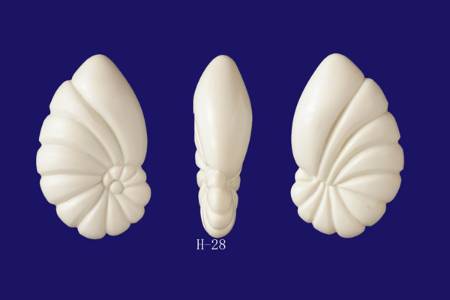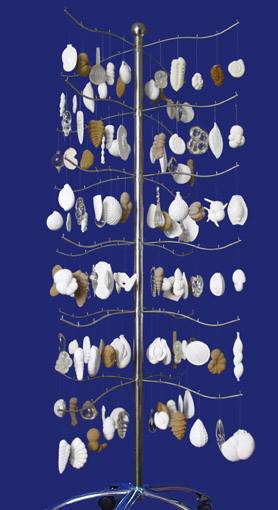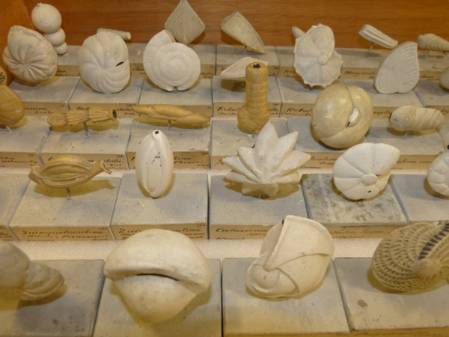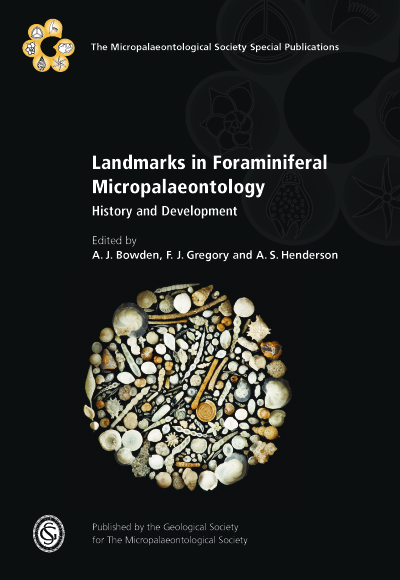The answer is in the world’s first foraminiferal sculpture park in Zhongshan City, China. Remarkable Chinese scientist Zheng Shouyi has gained international recognition for her work on the Foraminifera of China and was responsible for encouraging the building of this sculpture park.
Just before Christmas, a book chapter written by myself and entitled 'A brief History of modelling of the foraminifera from d'Orbigny to Zheng Shouyi' was published in a Special Publication of the Micropalaeontological Society on 'Landmarks in Foraminiferal Micropalaeontology, History and Development'. This post highlights the remarkable work of Zheng Shouyi who has shown publically what is hidden behind the scenes of many research establishments like the Museum and touches briefly on some of the microfossil model collections we have here at the Museum.
Zheng Shouyi writes 'Foraminifera are shelled marine protozoa about 1 mm in size, with a geological history of five hundred million years. There are 40,000 known fossil species ranging from Cambrian to Quaternary and some 6000 species living in the world oceans. In allusion to the role they play as excellent bioindicators of past and present marine environments used in many scientific disciplines, the foraminifera have been dubbed tiny giants of the great seas by Wayne Brock (1977).'
The sculptures are magnified between 750 and almost 9,000 times, with some based on species for which we hold the holotype specimens. The example above shows Pseudononion auriculum (Heron-Allen and Earland, 1930) while other sculptures represent species described by Brady from our Challenger Collection.
Zheng Shouyi in front of some foraminiferal sculptures at the Sanxian Foraminiferal Sculpture Park, Zhongshan City, Guangdong Province, China (photo courtesy of Bilal Haq)
114 large stone sculptures of Palaeozoic to modern foraminifera have been sculpted from marble, granite and sandstone over 5 years under the guidance of Zheng Shouyi. 32 locations and establishments in China, Austria, India, South Korea and the Philippines, have copies of Zheng Shouyi’s models and sculptures.
The idea for a sculpture park was first suggested by Bilal Haq of the National Science Foundation in USA when he saw Zheng Shouyi’s models in her office in the Institute of Oceanology in Qingdao, China. Zheng used her local political influence to persuade authorities in her home town of Zhongshan to create “Sanxiang Foraminiferal Sculpture Park” that opened in 2009. The Smithsonian Magazine has listed the park as one of its top 10 Evotourism sites.
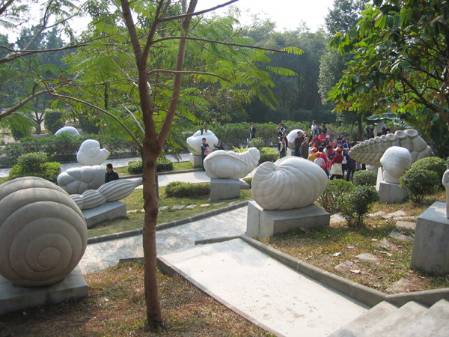 Sanxian Foraminiferal Sculpture Park, Zhongshan City, Guangdong Province, China (photo courtesy of Bilal Haq)
Sanxian Foraminiferal Sculpture Park, Zhongshan City, Guangdong Province, China (photo courtesy of Bilal Haq)
Zheng Shouyi was born in the Philippines to Chinese parents in 1931 and moved to China following her university education. She discovered foraminifera during her graduate studies and reports 'love at first sight of the beautifully diverse tests of Foraminifera'. She was assigned to work on the taxonomy and ecology of Recent Foraminifera of the Chinese seas, using some 1700 water and sediment samples collected from 1958-1960 by the National Comprehensive Oceanographic Investigation from sampling sites ranging from the cold temperate northernmost Bohai Sea to the South China Sea.
She was presented the 2003 Joseph A. Cushman Award for outstanding contributions to foraminiferal studies in recognition of a career that established her as the foremost Chinese Foraminiferal micropalaeontologist. In 2009 she was the only woman to be honoured as one of the top ten outstanding returned overseas Chinese.
Palm sized foraminiferal models made by Zheng Shouyi including Pseudononion auriculum (Heron-Allen and Earland, 1930) above. We are looking to acquire a set of these for our collections (photo courtesy of Zheng Shouyi)
Inspired by the famous French pioneer of foraminiferal studies Alcide d’Orbigny (1802-1857) and the models he used to illustrate his work, Zheng has also created plastic palm-sized models of 250 species of foraminifera belonging to 192 genera. Zheng Shouyi's models would look amazing in our public galleries and showcase some of the Museum science and collections not normally reflected by the displays at the Museum.
Some of the models of foraminifera from our collections made by d'Orbigny in 1826. Yellower models are based on living species while fossil species are modelled in white plaster of paris.
I am currently in negotiation with Zheng Shouyi about acquiring a 120 piece set of Zheng Shouyi's models to complement the microfossil models, like those of d'Orbigny that we have in our collections, support ongoing research into modelling foraminifera and to go on display to illustrate Museum science and collections.
The front cover of 'Landmarks in Foraminiferal Micropalaeontology' features some microfossils from our collection and the final chapter illustrates many of the microfossil model sets we have behind the scenes.
If you would like to find out more about Zheng Shouyi, Alcide d’Orbigny or Heron-Allen, arguably the man responsible for the nucleus of the Museum’s amazing micropalaeontological collections, then the book entitled 'Landmarks in Foraminiferal Micropalaeontology, History and Development' is now available.





